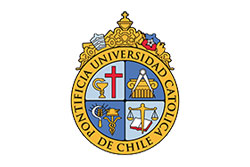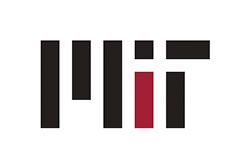In honor of the released of The Boston BRT Study Group final report, BRTCoE member Chris Zegras posted this blog update:
Source: Chris Zegras – One Step Blog (June 19th, 2015)
I first “discovered” the idea of bus rapid transit (BRT) when I learned about the famed Curitiba example in 1991 (although at the time it was not referred to as BRT, per se). Since that time, and especially in the past 15 years, BRT has veritably exploded across the world’s urban landscapes. My own work has not ignored this trend; I have been part of the BRT Centre of Excellence (BRT CoE) since its inception in 2009, have co-taught a course about bus rapid transit oriented development (BRTOD), advised various students on the politics (in Mexico and Chile and Pakistan), design, and assessment of BRT implementation, and written on BRT stations and walk access in China.
So, when two years ago the Barr Foundation invited me to participate in the Greater Boston BRT Study Group, I accepted with honor and pleasure the offer to work on BRT in “my own backyard.” To date, BRT in Boston consists of what can only be characterized, generously, as “BRT-Lite” – the Silver Line. The Study Group partnered with the Institute for Transportation & Development Policy (ITDP), to analyze a number of potential BRT corridors for the city. The final report, titled Better Rapid Transit for Greater Boston: The Potential for Gold Standard Bus Rapid Transit across the Metropolitan Area, has just been released.
In light of this new report, I decided to compile, edit, and share here my own thoughts on BRT in the USA, inspired by some interview questions posed to me in October 2014 by BusRide Magazine. Some of the responses below benefited from very helpful conversations with and ideas from my good friend and colleague Prof. Juan Carlos Muñoz, Director of the BRT CoE.

Q: How would you assess the present state of BRT in the USA?
BRT in the United States is still relatively nascent, even though the concept was born in the USA in the 1930s. While we have seen important growth in recent years and we actually have some long-standing precedents (e.g., in Pittsburgh, Los Angeles [El Monte]), in general, if you look at the number of BRT projects in the USA (and the relative quality of those projects), we have a long way to go.
Q: In your view what does BRT in the USA require from municipalities, transit authorities, and the general public?
For municipalities in most of the USA, BRT requires collaboration, as most public transit in the USA is trans-Municipal (consider Greater Boston’s 150+ cities and towns….). Municipalities will most likely need to be willing to sacrifice some road space (for parking and automobiles) in order to give priority to buses. This requires risk-taking and innovative leadership and a close partnership with transit agencies to identify stations, alter land uses to develop around those stations, and implement relevant complementary policies (e.g., parking regulations), pedestrian prioritization and safety measures, etc. Ultimately, municipalities need to create environments that will enable and attract urban development that can help transit thrive.
For transit authorities, effective BRT requires well-integrated and interconnected public transit services – easy payment, easy transfers, clear information/wayfinding, and real-time information to the users. BRT means replicating the characteristics of a subway: Fast, high frequency, high comfort, high reliability, good information, attractive branding, well-identified and well-designed corridors, streetscapes and stations. This requires a willingness to innovate, to break out of traditional approaches and, again, closely collaborate with the resident municipalities

Finally, for us, the general public, BRT requires a willingness to recognize and accept the bus as a quality mode of transport (in fact, the surprisingly sparse evidence suggests the public doesn’t care about buses versus trains, per se, rather the level of service actually provided). We must also be willing to accept more space in the city dedicated to buses and bus priority (even Ottawa’s example has suffered from this problem in the downtown area). Finally, we must accept that good mobility sometimes requires tradeoffs (local costs at regional benefit – the quintessential NIMBY challenge).
Q: What major hurdles do you see BRT projects typically face?
Authorities face, awkwardly, the possibility of losing space traditionally dedicated to automobiles. In addition, fitting exclusive bus lanes into traditional urban fabrics can be a challenge. But, many cities have shown the great catalyzing opportunity for BRT to restructure urban space, as exemplified by the downtown sections in Bogotá, Curitiba and Mexico City. We need to look beyond our borders, see that it can be, and has been, done well in very challenging urban contexts.
Another major hurdle is political acceptance. We see this the world over, but especially in the USA. People have this belief that high quality public transit = train and view the bus as a second-class mode. Unfortunately, this has produced a mentality of “give me trains or give me nothing.” BRT has shown that buses can be as good as urban rail systems, with greater flexibility, lower cost and quicker implementation. We need good examples so that the general public experiences high quality bus-based rapid transit and we need newly trained professionals, able to work on transdisciplinary challenges involving the design of streetspaces, public spaces, vehicles, operation and control systems, etc. BRT provides a unique opportunity to enhance public space at the surface, redesigning the city and its neighborhoods for the better, in a reasonably quick and affordable way.
In the global south, time is a major hurdle – we are in a ‘race against time,’ as traditionally transit-heavy places become increasingly automobile-dependent which then erodes the relative convenience of public transit. Under current dynamics the window for maintaining public transit-oriented cities and lifestyles is quickly closing in developing cities, which poses a particular risk to the lives of the urban poor.
Ultimately, we cannot view BRT projects solely as transportation projects. Success involves the integration of infrastructure, urban space and vehicles – the whole package. This increases the risk, but also the reward. BRT’s benefits also pose a risk: BRT’s low cost does not mean it should be done “on the cheap”; and BRT’s promise of rapid implementation does not mean it should be done rashly.
Q: In terms of BRT operations and management, can you describe management and operational considerations specific to BRT, the advantages and disadvantages of in-house management, and the conditions under which is it advisable to contract with an outside management company?
I can only respond here as a reasonably informed layperson….as these questions extend beyond my own areas of research. First, in terms of operational considerations, in the USA good control systems seem fundamental due to the relatively low frequency of even reasonably high patronage systems. I cannot imagine any BRT system in the USA approaching the frequencies of, say Bogotá; the USA could make a strong contribution to global practice through control systems innovations.
Regarding the advantages and disadvantages of in-house management, I believe these don’t differ from public transit more generally. Some of the best examples of BRT are public-private partnerships (PPPs): Curitiba, Bogotá, Mexico City. But, PPPs require a very capable public sector counterpart and continuous innovation to set the proper incentives; ensure transparency and arms-length regulation; minimize incumbent advantage in re-bidding; etc. The USA has been a real laggard in the use of PPPs for effective public transit delivery (although most of our public transport systems were owned and operated by the private sector up until the 1950s).
Admittedly, contracting in public transport always poses a challenge, but the rest of the world offers plenty of experiences to draw from. An efficient, incentive-driven, in-house model might be best for the USA in the short-term, but ultimately context and experience matter the most: matching procurement strategies to policy objectives appropriate to the local supplier market. The UK has a rich and well-documented experience to draw from; but many parts of the world warrant a close look (including Latin America, Singapore, Hong Kong).
Q: How about the BRT bus: what are its essential components; can BRT inspire and ignite creative product design; how does the bus contribute to the success of a BRT project?
In the best BRT systems the bus serves as an integrated component of the overall system: off-board fare payment, level boarding, numerous boarding/alighting doors, comfortable and dignified service quality, and energy efficiency. Many BRT proponents believe that median lane services are critical, but I believe this has become too doctrinal….In an ideal world, we would have doors on both sides, providing maximum flexibility…
I am optimistic that BRT can inspire and ignite creative design for the vehicles themselves. Curitiba’s bi-articulated buses, introduced in the early 1990s, offer a great example of homegrown vehicle innovation responding to a specific need. Recent moves into hybrid electric buses are also promising. But, we need more creative vehicle design for, e.g.: door placement flexibility; low-floor vehicles without losing space to motors and wheels; maneuvering in tight and historically and/or environmentally sensitive spaces; vehicle platooning; etc. The promise of self-driving cars (i.e., autonomous vehicles) has received much public attention recently (e.g., the Google Car). However, tremendous short-term gains can be found in autonomy applied to bus systems, especially BRT, in combination with vehicle and service innovation, advances in electric drives, batteries, and rapid electric charging. The convergence of these trends has great promise for future vehicle and service innovations.
In the end, I don’t think the bus is as important as the system. The bus clearly plays a fundamental role, but the best bus in a poorly designed system will still result in a poor system.
Q: How important is special branding, naming, and marketing to a BRT system?
The evidence seems to suggest that branding and marketing are important, but I am not a marketing researcher. Many of the recent successes (in Latin America, Africa, etc.) have been “branded” with some catchy name (Metrobus, Transmilenio, Raya Vea, etc.).
The class we taught in the Fall semester of 2013 with MIT and Catholic University of Chile offers a good example. For the second half of the semester, we focused on the BRT potentials for Boston’s so-called “Urban Ring” (a long-proposed circumferential transit route in Boston). Independently, and quite early on in the project, the students decided to re-brand the project as the “Diamond Ring” – an ode to Boston’s famed “Emerald Necklace” park system and a referent to Boston’s existing Silver Line; but also recognizing that a jewel was a much more attractive sales pitch than “urban”…
Q: What are the advantages and disadvantages of BRT versus light rail transit (LRT)?
I think the differences are narrower than the competing advocate camps would like us to believe. From stakeholders’ perspectives, the empirics are sparse. We don’t really know what users prefer, what developers prefer, what residents prefer. The USA (and MANY other places) have an inherent rail bias, for whatever reason. But, the evidence I have seen (in a handful of USA cities) suggests that users actually care about levels of service, not any particular mode, per se. But, a pure apples to apples comparison, empirically, is very difficult, since it’s hard to find two situations where all else is equal except road- versus rail-based guidance.
One of BRT’s great advantages comes from its flexibility: no strings (or rails) attached. LRT probably has a noise and local air pollution advantage; from a developers perspective there seems to be some belief that the tracks signify permanence. But, I understand this to be more of a hypothesis than an empirically supported fact.
Again, innovative vehicle design can probably play an important role here: a bus can be made to look just as attractive as a train. Ultimately, however, the best public transit system deploys the right modes in the right places and aims for optimized coexistence: forming an integrated, seamless, well-designed, well-operated SYSTEM. Our essential goal must be to provide service that can compete, and beat, private motorized transportation (i.e., the car).
Q: What “best practice” can you share for politicians involved in BRT projects?
I am not, nor will I ever be, a politician. But, I would suggest a simple (and probably politically naïve) recipe: do not over-promise; deliver on what you promise; recognize that not everybody can be a winner in any urban project; thus, design a project that can maximize the winners but responsibly compensate the losers. Again, I’m no politician….












